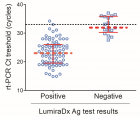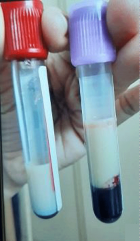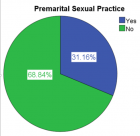Table of Contents
Zn2+ Ions-Immune Virucidal activities for children and adults with preventions against 2019-nCoV and COVID-19 infection
Published on: 28th July, 2020
OCLC Number/Unique Identifier: 8873197329
Zinc induced pediatric preventing respiratory 2019-nCoV is required that supplementation with zinc gluconate 20 mg in Zn deficient children resulted in a nearly twofold reduction of acute lower respiratory infections as well as the time to recovery. Zinc supplementation in children is associated with a reduction in the incidence and prevalence of pneumonia. Preventing 2019-nCoV pneumonia is required that zinc supplementation alone (10 to 20 mg) for more than 3 months significantly reduces in the rate of pneumonia. zinc pediatric intake may be required to be effective range 10~20 mg/d for 2019-CoV prevention, 10~30 mg/d for reduction of COVID-19 bronchitis, and 20~30 mg/d for recovery from COVID-19 pneumonia, in which Zn2+ could bind with viral surface proteins by Zn2+ions-centered tetrahedrally coordination pattern.
On the other hand, for aults, the zinc-homeostatic immune concentration may provide a protective role against the COVID-19 pandemic, likely by improving the host’s resistance against viral infection. 50 mg of zinc per day might provide an additional shield against the COVID-19 pandemic, possibly by increasing the host resistance to viral infection to minimize the burden of the disease. In order to prevent that an outbreak of respiratory sickness caused by a novel coronavirus (COVID-19) has become a serious public threat and disrupted many lives,assessing the efficacy of FDA-approved Zn-ejector drugs such as disulfiram combined with interferon to treat COVID-19 infected patients has been proposed. The key strategies for preventing lung damages include avoiding direct lung infection, altering host-virus interactions, promoting immune responses, diluting virus concentrations in lung tissues by promoting viral migration to the rest of the body, maintaining waste removal balance, protecting heart function and renal function, avoiding other infections, reducing allergic reactions and anti-inflammatory. The interactions had been found on the binding specificity by Zn2+ ions-centered tetrahedral geometric coordination of the inhibitors against 3C and 3C-like proteases. In addition, transient zinc chelation TPEN and EPDTC have been noted as preventing virus replication.
Zinc-induced ROS production in COVID-19 respiratory ailment and pneumonia occurs both in children and adults. In children.
ROS production in zinc (Ⅱ)-immune pediatric patient with COVID-19 bronchitis and pneumonia cannot be elucidated yet. In adults, zinc induced ROS generation in pulmonary COVID-19 infected cells is that alterations of ROS-producing and scavenging pathways that are caused by respiratory viral infections are implicated in inflammation, lung epithelial disruption, and tissue damage, and, in some cases, even pulmonary fibrosis. The involvement of oxidative stress in cell deaths caused during RNA virus infection and ROS production is correlated with host cell death.
To be and not to be: With wisdom and grace or stupidity and disgrace after the SARS-CoV2 outbreak
Published on: 3rd April, 2020
OCLC Number/Unique Identifier: 8572768607
The day before yesterday, it was shameful for some politicians, especially President Trump, to label SARS-CoV2 virus as discriminatory “Chinese Virus”. Politicians should be more professional and graceful, and distance themselves from the independence of the academy if something remains unknown to them. Besides, there were two months for President Trump to prepare the Americans for this Virus [1]; unfortunately, could he have given more attention to his duty of anti-SARS-CoV2 action, despite spending time to defending against the impeachment of his presidency? Besides, in line with this idea, presidential candidate Hillary Clinton wrote: ”The president is turning to racist rhetoric to distract from his failures to take the coronavirus seriously early on, make tests widely available and adequately prepare the country for a period of crisis. Don’t fall for it. Don’t let your friends and family fall for it”.
Educational strategy to increase knowledge and risk perception about sexually transmitted infection in polytechnic students
Published on: 19th March, 2020
OCLC Number/Unique Identifier: 8577723979
Introduction: The incidence of STI-HIV/AIDS is on the rise, making adolescents a vulnerable group at risk.
Objective: To increase the knowledge and perception of risk about STI-HIV/AIDS, through Educational Intervention in students of the Polytechnic Institute ¨Hermanos Gómez¨ of the Municipality San José de las Lajas, Mayabeque Province.
Method: Quasi-experimental study, intervention at the ¨Hermanos Gómez Polytechnic Institute, of the Municipality of San José de la Lajas, through affective, participatory, animation and reflection techniques, the universe being made up of 17 students aged 16-17 years of specialty in Industrial Chemistry, during the period from December 2014 to November 2015. The variables used were: knowledge about STI-HIV/AIDS and perception of risk towards said diseases.
Results: after the intervention, an increase in the level of knowledge of the main STIs in the study was evident: Syphilis, Condylomas, HIV/AIDS, Gonorrhea, Trichomonas, Candida Albicans and Herpes simplex, which were adequately identified by 60%; 71% recognized the routes of sexual transmission, 60% the typical clinical manifestations, an increase in the levels of knowledge about the use of condoms to prevent STIs, and in the same way the perception of risk in an 83% after the intervention.
Conclusion: After the intervention, there was an increase in knowledge of STIs, transmission routes, clinical manifestations, condom use, and risk perception.

If you are already a member of our network and need to keep track of any developments regarding a question you have already submitted, click "take me to my Query."



















































































































































